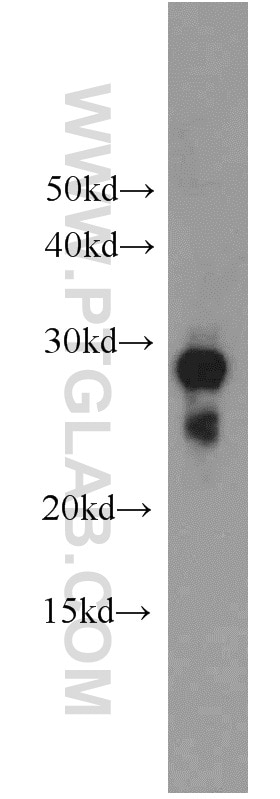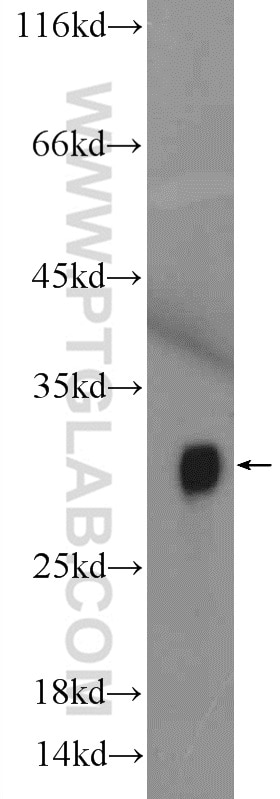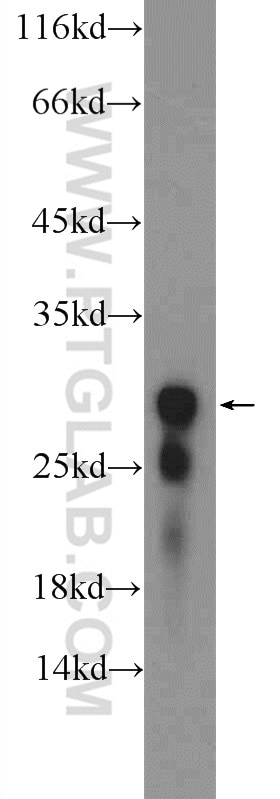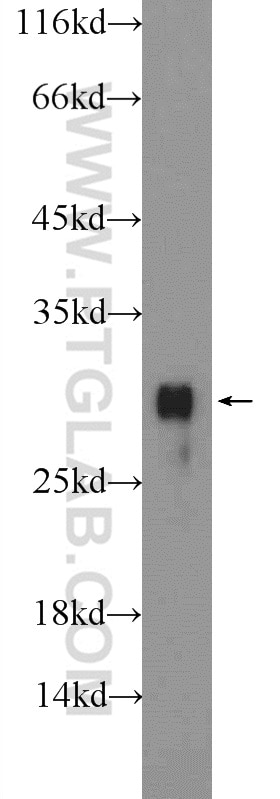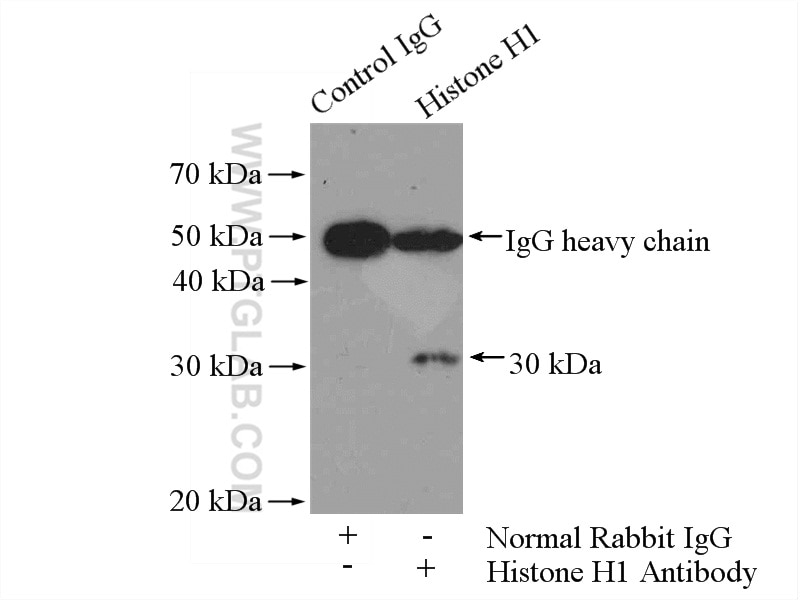Histone H1 Polyclonal antibody
Histone H1 Polyclonal Antibody for IP, WB,ELISA
Host / Isotype
Rabbit / IgG
Reactivity
human, mouse, rat
Applications
WB, IP, IF, ELISA
Conjugate
Unconjugated
Cat no : 18201-1-AP
Synonyms
Validation Data Gallery
Tested Applications
| Positive WB detected in | mouse thymus tissue, mouse kidney tissue, mouse lung tissue |
| Positive IP detected in | mouse kidney tissue |
Recommended dilution
| Application | Dilution |
|---|---|
| Western Blot (WB) | WB : 1:500-1:2000 |
| Immunoprecipitation (IP) | IP : 0.5-4.0 ug for 1.0-3.0 mg of total protein lysate |
| It is recommended that this reagent should be titrated in each testing system to obtain optimal results. | |
| Sample-dependent, Check data in validation data gallery. | |
Published Applications
| WB | See 2 publications below |
| IF | See 1 publications below |
| IP | See 1 publications below |
Product Information
The immunogen of 18201-1-AP is Histone H1 Fusion Protein expressed in E. coli.
| Tested Reactivity | human, mouse, rat |
| Cited Reactivity | mouse |
| Host / Isotype | Rabbit / IgG |
| Class | Polyclonal |
| Type | Antibody |
| Immunogen | Histone H1 fusion protein Ag12704 |
| Full Name | histone cluster 1, H1a |
| Calculated Molecular Weight | 215 aa, 22 kDa |
| Observed Molecular Weight | 28 kDa, 30 kDa |
| GenBank Accession Number | BC101593 |
| Gene Symbol | HIST1H1A |
| Gene ID (NCBI) | 3024 |
| RRID | AB_10859820 |
| Conjugate | Unconjugated |
| Form | Liquid |
| Purification Method | Antigen affinity purification |
| Storage Buffer | PBS with 0.02% sodium azide and 50% glycerol pH 7.3. |
| Storage Conditions | Store at -20°C. Stable for one year after shipment. Aliquoting is unnecessary for -20oC storage. 20ul sizes contain 0.1% BSA. |
Protocols
| Product Specific Protocols | |
|---|---|
| WB protocol for Histone H1 antibody 18201-1-AP | Download protocol |
| IP protocol for Histone H1 antibody 18201-1-AP | Download protocol |
| Standard Protocols | |
|---|---|
| Click here to view our Standard Protocols |
Publications
| Species | Application | Title |
|---|---|---|
Cell Calcium IN BRAIN POST-ISCHEMIC PLASTICITY, Na+/Ca2+ EXCHANGER 1 AND Ascl1 INTERVENE IN MICROGLIA-DEPENDENT CONVERSION OF ASTROCYTES INTO NEURONAL LINEAGE. | ||
Int J Mol Sci The KDET Motif in the Intracellular Domain of the Cell Adhesion Molecule L1 Interacts with Several Nuclear, Cytoplasmic, and Mitochondrial Proteins Essential for Neuronal Functions | ||
Int J Mol Sci The Interactions of the 70 kDa Fragment of Cell Adhesion Molecule L1 with Topoisomerase 1, Peroxisome Proliferator-Activated Receptor γ and NADH Dehydrogenase (Ubiquinone) Flavoprotein 2 Are Involved in Gene Expression and Neuronal L1-Dependent Functions |
